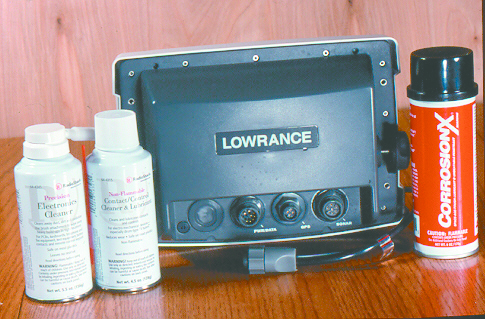
Lake Verret is known for its finicky bass fishing, but this 13-time King Fisherman says December can be one of the most-exciting months to be on the waterbody.
There are three places to look when a fish finder or GPS unit stops working properly. The problem can be in the display unit, in the transducer (for a fish finder) or GPS antenna module (for a GPS unit), or it can be in the power wiring for either type of unit. Start by making sure the unit is getting 12 volts of uninterrupted power. If the unit won’t turn on at all and you find that there is no power to its power plug, then you know the problem is in the fuse assembly or wiring.
We are seldom so lucky. Intermittent operation is much more common and more difficult to diagnose. I look first at the pins and sockets in the power plug and its receptacle. If I see any blue-green powder or other corrosion, I replace the power plug and clean the socket on the back of the unit with a contact spray that’s safe for use on plastics. The spray is available from Radio Shack. Be careful not to get any spray on the unit’s display screen.
You can sometimes spray-clean the power plug and get it to last a bit longer. I spray the pins and sockets, then plug and unplug the connection five times, then spray again and repeat until everything is clean. I sometimes do that to get through the troubleshooting stage, but I replace the plug as soon as possible.
If the unit still won’t work correctly after the plug is cleaned or replaced, I run a jumper wire straight from my battery to the end of the unit’s factory power cable. I just route the jumper wire right across the deck for testing purposes.
If the unit works perfectly when powered by the jumper wire then the problem is in the wiring between the battery and the end of the unit’s factory power cable. I route a new power wire, fused at the battery, directly to the end of the unit’s factory power cable.
Trying to find the bad connection(s) in the old wiring is an exercise in frustration. And if the wire is old enough to be going bad in one spot, it is probably ready to give you trouble in others. The new wire will be spliced only at the unit’s power cable and the battery, two places that will be easy to check and repair in the future.
Using marine grade wire and sealing the connections with heat shrink tubing will add years to the new power wire’s service life. Spraying the plug and socket regularly with contact cleaner and a lubricating corrosion barrier like CorrosionX will keep new crud from forming.
If the unit still doesn’t work properly when powered with the jumper wire, then your problem can be in the display head or in the transducer/GPS antenna module.
If you have a second unit on your boat that uses the same power and transducer/antenna connectors, or you have a friend who does, swap the problem unit with the known good unit. If the borrowed good unit suddenly shows the same problems that your old unit exhibits and your old unit works fine when plugged into the borrowed unit’s connections, then your unit is OK and the problem is in your transducer/antenna module. GPS antenna modules can usually be repaired, but transducers are generally replaced.
If your unit shows the same problems when hooked up to the borrowed unit’s connections and the borrowed unit works fine when hooked up to yours, then the unit is at fault and needs to be sent in for repair.
You can accomplish the same thing by temporarily swapping out your GPS module or transducer with a known good one. If your old antenna module works fine when connected to the other unit and the known good antenna suddenly develops problems when connected to your unit, then you know your unit is bad.
If the unit you are troubleshooting is a fish finder, you can borrow a known good transducer, hook it up and hold the transducer in the water over the side of the boat. Make sure the transducer is pointing straight down and turn on the unit. If your trouble disappears, then your old transducer needs to be replaced. If the unit won’t work with the known good transducer, then the unit is bad.
You don’t have to be a tech head to use swap-and-test troubleshooting; it works for anybody.


